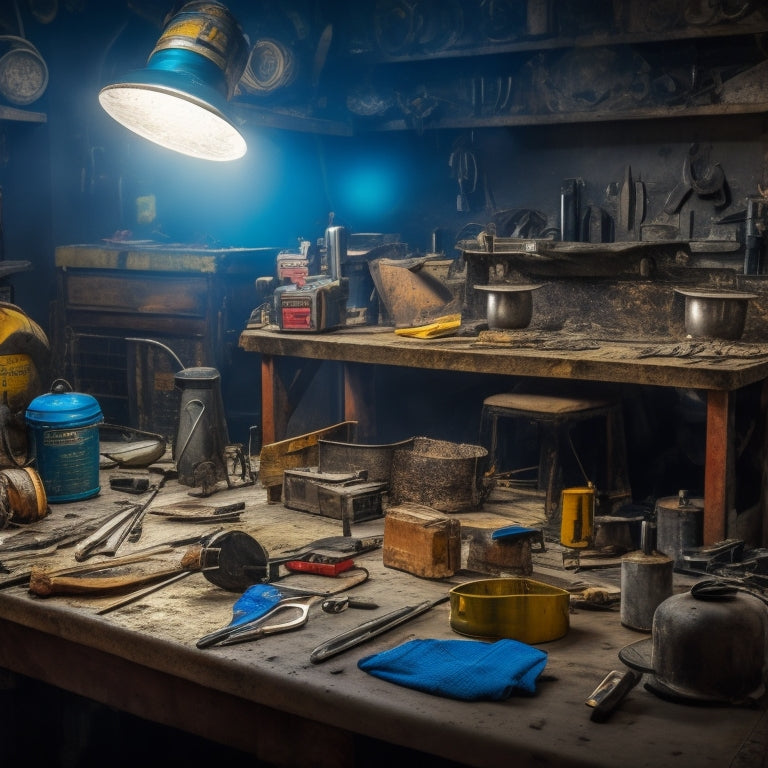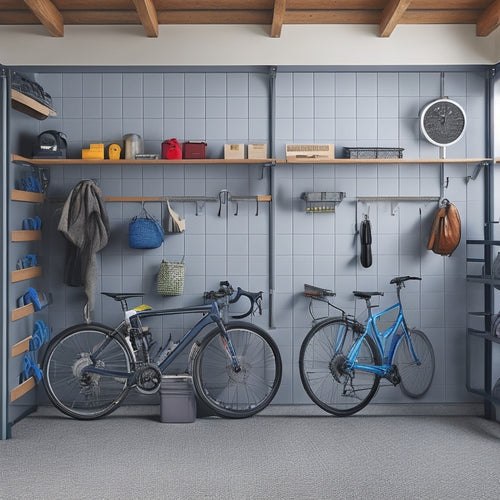
Essential Gear and Products for Welders
Share
Welders require a range of essential gear and products to guarantee safe, efficient, and high-quality welding operations. Essential safety gear, including welding helmets, gloves, and aprons, is crucial for protecting against hazards. Key welding products, such as electrodes, welding wire, and welding rods, enable the welding process. Ensuring product quality involves meeting industry standards, using reputable brands, and implementing regular quality control measures. Important safety precautions include workshop ventilation, emergency preparedness, and proper PPE use. Additionally, optimizing cost efficiency involves comparison analysis, bulk buying, and investing in high-quality products for long-term savings. By understanding these essentials, welders can optimize their operations for success.
Key Takeaways
• Safety gear, including welding helmets, gloves, and aprons, is crucial for protecting welders from injuries and hazards.
• Electrodes, welding wire, and welding rods are essential products for creating high-quality welds and completing projects efficiently.
• Welding carts and curtains help organize the workspace, promoting efficiency and reducing the risk of accidents.
• Proper ventilation and welding gas shields are vital for preventing fume inhalation and ensuring a safe working environment.
• Regular maintenance of safety gear and equipment is essential for extending their lifespan and ensuring optimal performance.
Welding Support Essentials
Welding support equipment plays an essential role in ensuring the safety and efficiency of welding operations by providing essential protection and convenience for welders.
Safety gear, such as welding helmets, gloves, and aprons, protect welders from sparks, heat, and UV radiation. Regular maintenance of this equipment is pivotal to guarantee its effectiveness.
A well-organized workspace, complete with welding carts and curtains, promotes efficiency and reduces the risk of accidents. Proper ventilation is also necessary to prevent fume inhalation and ensure a healthy working environment.
Crucial Welding Products
Essential to the welding process, electrodes, wire, rods, gas, and flux work in tandem to create a strong, reliable bond. The selection of these products is critical to achieving high-quality welds. Here's a breakdown of the key welding products:
| Product | Importance |
|---|---|
| Electrodes | Enables electric arc creation, essential for welding |
| Welding Wire | Feeds electrode to weld joint, maintaining continuous welding |
| Welding Rods | Used in shielded metal arc welding, provides versatility |
| Welding Gas | Shields weld pool from atmospheric contamination, ensures purity |
| Welding Flux | Removes impurities from weld joint, ensures strong bond |
Proper electrode selection, understanding the importance of flux, and choosing the right gas type are essential to producing high-quality welds. By selecting the right welding products, welders can guarantee strong, reliable bonds that meet industry standards.
Ensuring Product Quality
Regular quality control measures are essential to guarantee consistent performance and reliability of welding products, ensuring that they meet industry safety standards and specifications.
This involves conducting regular checks on welding equipment and supplies to identify any defects or inconsistencies. Using reputable brands is also vital in ensuring product quality, as they adhere to strict manufacturing standards and guidelines.
Additionally, proper storage and maintenance of welding materials and equipment can prevent damage and contamination, further ensuring product quality. By implementing these quality control measures, welders can trust that their products will perform consistently and reliably, resulting in high-quality welds and increased productivity.
Vital Safety Precautions
In the high-risk environment of welding, a well-maintained personal protective equipment (PPE) arsenal, including helmets, gloves, and aprons, serves as the first line of defense against the hazards of heat, sparks, and toxic fumes. To further mitigate risks, welders must prioritize crucial safety precautions.
| Safety Measure | Description | Importance |
|---|---|---|
| Workshop Ventilation | Removes toxic fumes and particles | Prevents respiratory issues |
| Emergency Preparedness | Access to fire extinguishers and first aid kits | Quick response to accidents |
| Proper PPE Use | Consistent use of helmets, gloves, and aprons | Prevents injuries and fatalities |
| Regular Training | Staying updated on safety best practices | Enhances situational awareness |
Optimizing Cost Efficiency
While giving top priority to safety measures is essential in the welding industry, optimizing cost efficiency is also vital to ensure the sustainability and profitability of welding operations.
To achieve this, welders can adopt cost-saving strategies such as comparison analysis to identify budget-friendly options for welding equipment and supplies. Investing in high-quality products may seem significant upfront, but it can lead to long-term economic alternatives and reduced maintenance costs. Additionally, bulk buying welding supplies can result in significant discounts.
Regularly evaluating usage patterns and optimizing procurement processes can also help minimize waste and reduce costs. By implementing these strategies, welders can strike a balance between safety and cost efficiency, ensuring a profitable and sustainable operation.
Frequently Asked Questions
How Do I Properly Dispose of Used Welding Electrodes and Rods?
To properly dispose of used welding electrodes and rods, prioritize environmentally responsible practices by segregating hazardous materials and exploring electrode recycling options, ensuring compliance with local regulations and minimizing environmental impact.
Can I Use Welding Equipment in Areas With High Humidity?
Like a ship steering through treacherous waters, welding equipment must brave the challenges of high humidity. Moisture protection is essential, as excess humidity can corrode equipment and compromise weld quality, emphasizing the need for waterproof coatings and regular maintenance.
What Is the Recommended Temperature Range for Storing Welding Supplies?
For best storage, welding supplies should be kept in a dry, climate-controlled environment between 60°F to 75°F (15°C to 24°C), with minimal humidity, to prevent damage and guarantee product integrity, utilizing effective storage solutions to maintain ideal conditions.
Are There Any Specific Regulations for Welding in Residential Areas?
"In ancient Rome, blacksmiths forged swords amidst bustling streets, but modern welding in residential areas requires permits and adherence to neighborhood restrictions, ensuring safety and minimizing disruptions to daily life."
Can I Modify My Welding Equipment to Make It More Efficient?
When seeking to modify welding equipment for enhanced efficiency, explore customization options and efficiency tweaks, such as upgrading components, optimizing settings, and integrating automation, to improve performance and reduce downtime, while ensuring compliance with safety standards.
Related Posts
-

Key Features of a Garage Wall Hanging System
You're looking for a garage wall hanging system that's built to last and adapts to your needs. Look for systems made ...
-

Top 5 Small Tool Organizers for Your Workshop
You're looking to optimize your workshop's efficiency with high-quality small tool organizers. Compact storage soluti...
-

Custom Pegboard Storage for Your Workshop
You're looking to create a custom pegboard storage system that maximizes your workshop's space, enhances productivity...


